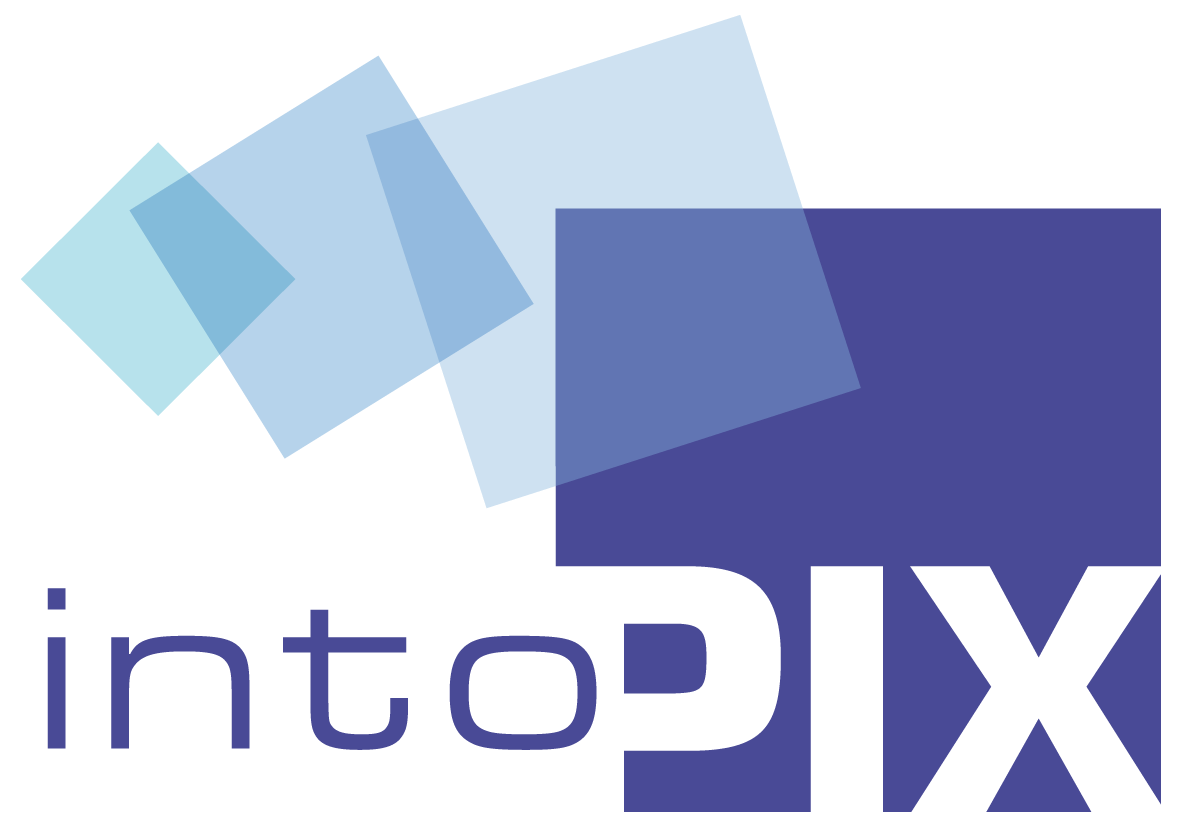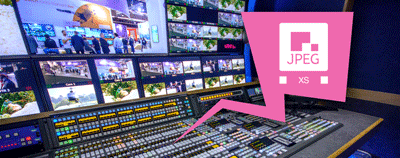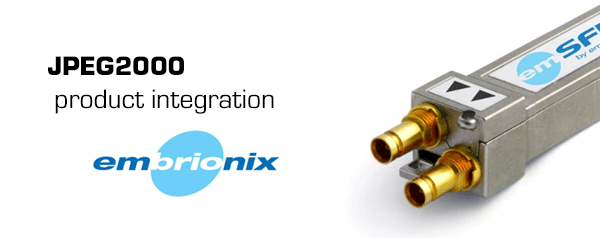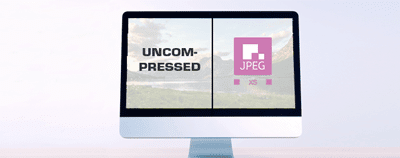
The codec provides useful features for broadcasters.
By Jean-Baptiste Lorent and François Macé - April 2010
Today’s broadcasters are looking for the highest image quality, flexible delivery formats, interoperability and standardized profiles for interactive video transport and workflows. They also have a vested interest in a common high-end format to archive, preserve and monetize the avalanche of video footage generated globally. This is the story behind the rapid adoption of JPEG 2000 compression in the contribution chain. Standardized broadcast profiles were adopted in 2010 to match current industry needs (JPEG 2000 Part 1 Amendment 3 — Profiles for Broadcast Application — ISO/IEC 15444-1:2004/Amd3), ensuring this wavelet-based codec’s benchmark position in contribution.
In parallel, these broadcast profiles have also filled the industrywide need for compression standards to archive and create mezzanine formats, allowing transcoding to a variety of media distribution channels. The ongoing standardization process of the Interoperable Master Format (IMF) by SMPTE based on JPEG 2000 profiles brings the adoption full-circle.
The U.S. Library of Congress, the French Institut National de l’Audiovisuel (INA) and several Hollywood studios have selected the codec for the long-term preservation of a century of audio-visual contents.
JPEG 2000 is different from other video codecs. MPEG and other DCTbased codecs have been designed to optimize the compression efficiency to deliver video to viewers via a pipe with limited bandwidth. JPEG 2000, with its wavelet transform algorithm, brings features not only for image compression efficiency, but to give also the user better control and flexibility throughout the image processing chain. The codec provides unique features that are not available in any other compression method.
JPEG 2000 under the spotlight
JPEG 2000 is based on the discrete wavelet transform (DWT) and uses scalar quantization, context modeling, arithmetic coding and post-compression rate allocation. JPEG 2000 provides random access (i.e. involving a minimal decoding) to the block level in each sub-band, thus making it possible to decode a region, a lowresolution or a low-quality image version of the image without having to decode it as a whole.
JPEG 2000 is a true improvement in functionality, providing lossy and lossless compression, progressive and parseable code streams, error resilience, region of interest (ROI), random access and other features in one integrated algorithm. (See Figure 1.)
In video applications, JPEG 2000 is used as an intraframe codec, so it closely matches the production workflow in which each frame of a video is treated as a single unit. In Hollywood, its ability to compress frame by frame has made this technology popular for digital intermediate coding. If the purpose of compression is the distribution of essence and no further editing is expected, long-GOP MPEG is typically preferred.
Broadcast processes
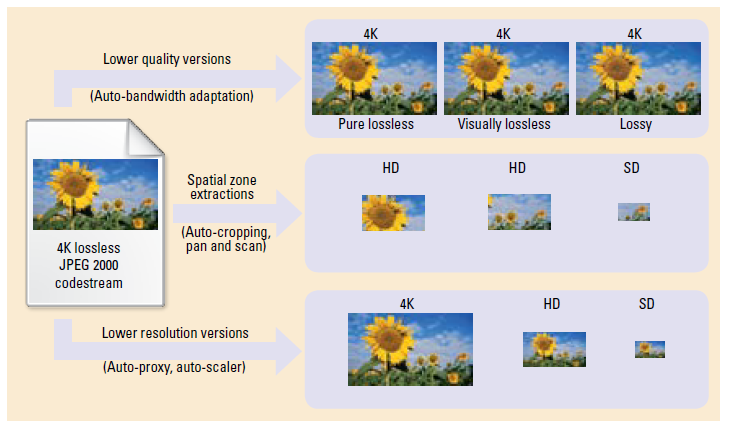
JPEG 2000 brings valuable features to the broadcast process including ingest, transcoding, captioning, quality control or audio track management. Its inherent properties fully qualify a codec for creating high-quality intermediate masters.
Post-production workflows consist of several encoding/decoding cycles. JPEG 2000 preserves the highest quality throughout this process, and no blocking artifacts are created. Moreover, the technology supports all common bit depths whether 8, 10, 12 bits or higher.
JPEG 2000 enables images to be compressed in lossy, and visually or mathematically lossless modes for various applications. (See Figure 2.)compressed in lossy, and visually or mathematically lossless modes for various applications. Additionally, its scalability allows a “create once, use many times” approach to service a wide range of user platforms.
The technology also enables improved editing: Even at the highest bit rates, its intrinsic flexibility makes it very user-friendly on laptop and workstation editing systems, with a limited number of full bit rate realtime video tracks. Improving computing hardware is certain to increase the number of real-time layers.
Since JPEG 2000 is an intraframe codec, this prevents error propagation over multiple frames and allows the video signal to be cut at any point for editing or other purposes.
Easy transcoding appeals to highend applications where workflows vastly benefit from transcoding to an intermediate version. JPEG 2000 ensures a clean and quick operation when bit rate is at a premium. Professional viewers have labeled correctly transcoded 1080p JPEG 2000 files compressed at 100Mb/s as “visually identical” to the original 2K footage. Furthermore, the wavelet-based JPEG 2000 compression does not interfere with the final — usually DCTbased — broadcast formats.
Last but not least, several standards specify in detail how the JPEG 2000 video stream should be encapsulated in a number of widely adopted container such as MXF or MPEG-2 TS.
Professional wireless video transmission
Wireless transmission is often challenged to improve its robustness in broadcast. Uncompressed HD wireless transmission is often seen as complex, for even if a 1080p60 transmission (3Gb/s) were possible wirelessly, it would be quite difficult to add the necessary FEC and encryption to the data stream. Of all the compression algorithms available in the market, JPEG2000 is seen as one of the top contenders for the following reasons. JPEG 2000 is inherently more error resilient than MPEG codecs. The codestream can be configured so the most important data (the lowest frequency data contains the most visually significant information) is located in the front, while successively higher frequency, less important, data can be placed in the back. Using appropriate FEC techniques, the lower frequency data can be protected while less protection can be applied to the higher frequency data, as errors in the higher frequency bands have much less effect on the displayed image quality. Also, similar to the contribution, the low latency of JPEG 2000 is something that would be practically impossible for wireless systems using an MPEG system based on long GOP coding.
Long-term preservation
The broadcasters and video archivists are looking for long-term digital preservation on disk. In most cases, the source material is not digital, but film that needs to be scanned or highquality analog videotape. As such, a destination digital format must then be selected.
Key requirements often include reducing the storage costs of uncompressed video while still maintaining indefinite protection from loss or damage. Moreover, the format should preferably enable digitized content to be exploited, which means providing flexibility — workflows again — and security. For these reasons, several studies and user reports claim JPEG 2000 to be the codec for audio-visual archiving.
Several reasons make JPEG 2000 a codec of choice for audio-visual archiving:
• The JPEG 2000 standard can be used with two different wavelet filters: the 9/7 wavelet filter that is irreversible and the 5/3 wavelet filter that is fully reversible. The 5/3 wavelet filter offers a pure mathematically lossless compression that enables a reduction in storage requirement of 50 percent on average while still allowing the exact original image information to be recovered. The 9/7 wavelet filter can encode in lossy or visually lossless modes.
• The scalability allowing proxy extraction, multiple quality layers, is of huge interest to ease client browsing and retrieval or transcoding and streaming.
• JPEG 2000 is an open standard that supports every resolution, color depth, number of components and frame rate.
• JPEG 2000 is license and royalty free.
The future
Several initiatives are pushing the industry beyond today’s HD: NHK Super Hi-Vision, also known as 8K and UHDTV, the Higher Frame Rates in Cinema initiative by James Cameron and Peter Jackson (up to 120fps), 16-bit color depth and the numerous manufacturers that are now offering 4K technology.
The need for efficient codecs has gained significant attraction amongst the industry. The future of JPEG 2000 is bright as it is an open standard that requires less power, consumes less space in hardware implementations and generally delivers greater scalability, flexibility and visual quality than other codecs. An increasing number of manufacturers, broadcasters and producers are using JPEG 2000 implementations to adapt today’s industry to these new challenges.
Related content
Discover the next generation : JPEG XS. Standardized at JPEG and co-created by intoPIX, JPEG XS is offering all the benefits of JPEG 2000, with a lower latency and lower complexity and a faster speed. It enables premium live IP production over LAN, WAN and to the cloud.
